Germany Overview – History, Geography and Culture
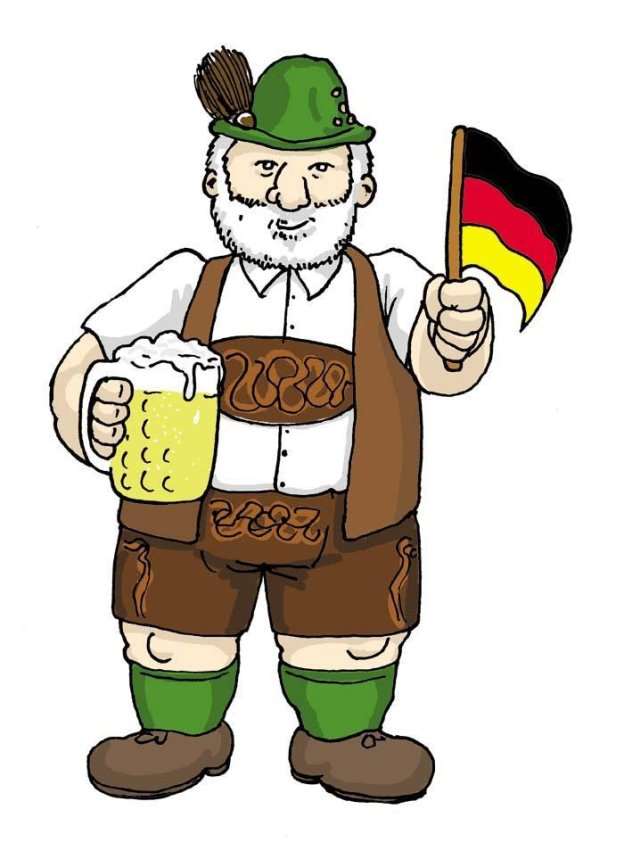
GERMANY
HISTORY OF GERMANY
In its long history, Germany has rarely been united. For most of the two millennia that Central Europe has been inhabited by German-speaking peoples, such as the Eastern Franks,
the area now called Germany was divided into hundreds of states, many quite small, including duchies, principalities, free cities, and ecclesiastical states. Not even the Romans united what is now known as Germany under one government; they managed to occupy only its southern and western portions . In A.D. 800 Charlemagne, who had been crowned Holy
Roman emperor by Pope Leo III, ruled over a territory that encompassed much of present-day Belgium , Franc e , Germany, the Netherlands, and Switzerland, but within a generation its existence was more symbolic than real. A modest economic recovery from 1924 to 1929 gave the Weimar Republic a brief respite. The severe social stress engendered by the Great Depression , however, swelled the vote received by extreme anti democratic parties in the election of 1930 and the two elections of 1932. The government ruled by emergency decree. In January , leading conservative politicians formed a new government with Hitler as chancellor. They intended to harness him and his party , now the country’s largest, to realize their own aim of replacing the republic with an authoritarian government. Within a few months, however, Hitler had out man euvered them and established a totalitarian regime. Only in 1945 did a military alliance of dozens of nations succeed in deposing him, and only after his regime and the nation it ruled had
committed crimes of unparalleled enormity known as the Holocaus.In World War I (1914-18), Germany’s aims were annexationist in nature and foresaw an enlarged Germany, with Belgium and Poland as vassal states and with colonies in Africa. However, Germany’s military strategy, involving a two-front war in France and Belgium in the west and Russia in the east, ultimately failed. Germany’s defeat in 1918 meant the end of the German Empire. The Treaty of Versailles, the peace settlement negotiated by the victors (Britain, France, and the United States) in 1919, imposed punitive conditions on Germany, including the loss of territory, financial reparations, and a diminished military. These conditions set the stage for World War II.
History of Germany flag
A horizontal tricolour of black, red, and gold. The flag of Germany is a tricolour consisting of three equal horizontal bands displaying the national colours of Germany: black, red, and gold. The flag was first adopted as the national flag of modern Germany in 1919, during the Weimar Republic. Black, red and gold coLOURS have played an important role in German history and can be traced back to the medieval banner of the Holy Roman Emperor – a black eagle with red claws and beak on a gold field. The Holy Roman Empire was a German majority, multi ethnic empire in central Europe from its beginning in 962 until it was defeated by Napoleon on August 6, 1806 at the Battle of Austerlitz.
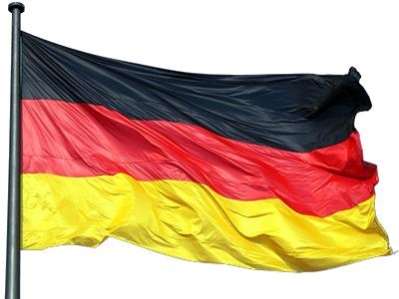
Germany was split following its defeat in the World War II and the Federal Republic of Germany (West Germany) restored the old black-red-yellow flag on May 23, 1949. The same tricolour was also used in the communist-dominated German Democratic Republic (East Germany), although its coat of arms was added to the tricolour in 1959. The two Germanys were reunited in 1990 and Unified Germany continued using the black-red-gold flag of the West Germany. After Germany’s defeat in the First World War a republic was declared in 1919 and the black, red, and gold flag was restored. German-states that were part of the Holy Roman Empire came under French rule and several German organizations began agitations to free Germany from foreign rule and create a unified country. Prominent among them were two organizations – Lützow Free Corps and Jena Student’s League – whose members wore uniforms of black with gold and red accessories and used flags of those colors.
THE ENVIRONMENT IMPACT
- CLIMATE
Effects of climate change clearly noticeable in Germany. Federal government publishes the first monitoring report on climate impacts and adaptation.Rising temperatures, more humid winters and more frequent extreme weather events increasingly affect society in Germany. Impacts are becoming noticeable in many sectors including energy supply, agriculture and healthcare. This is the conclusion of the most comprehensive federal government report on adaptation to climate change to date. On the basis of data collected in 15 different sectors of society, the report describes the shifts caused by the changing climate, which are already becoming apparent today, as well as the counter measures that address them successfully.
- Temperature
In addition , increasing temperatures increase photosynthesis and other metabolic processes, until a crop type specific temperature optimum is reached. Thermophilic crops that have not reached their optimum under current conditions (e.g.
Maize ) can therefore bring higher yields under moderate warming. Moreover, higher winter temperatures decrease the risk of frost damages. However, when the optimum is surpassed, yields of all crop types decrease. Extreme temperatures can harm plants permanently.
One of the other effect of rising temperatures is the loss of organic carbon from soil due to an accelerated rate of decomposition and mineralization of organic material in agricultural soils. This loss of organic carbon decreases soil fertility and contributes to the greenhouse effect through emissions of carbon dioxide. Studies have shown that due to temperature increase by 2100, 20-30% of European soil carbon will be lost. A decrease of soil organic carbon by 40-60% is possible if climate change induced changes in crop productivity and expected land use changes are taken into account.
- Soil
The soil ecosystem has many important functions. These include the regulation of material cycles, the decomposition and conversion of organic substances, the mobilisation of nutrients and filter functions. Many of these processes are highly dependent on temperature and water availability. Climate change therefore affects soil characteristics and functions.
- Deforrestation
In this country are aware to what extent irreplaceable capital values are being destroyed in German forests. 150,000 tons of timber per month are being taken as reparations. As regards immediate allied interests the adverse effects both on mining and on agriculture con- sequent on deforestation are also disregarded, and to this extent the date is being deferred when the Western Zones could pay their food bill and relieve British and American tax payers .The devastating evil of soil erosion has now also set in. Forest land plays an important part in agriculture ;it attracts rain, sucks up heavy rainfall and acts as a safeguard against both flood and drought. When the forest land is laid bare these evils appear in rotation ; heavy rainfall washes away the fertile top soil- Nature’s work of centuries being-undone-streams suddenly swell, later on to dry up, and sand is widely deposited both by flood and wind.Before the war Germany was the third largest timber importer in the world.
- Fertilizers manure
Has largely shaped political, economic, and social circumstances in their traditional uses. Subsequently, there has been a radical reshaping of environmental conditions following the development of chemically synthesized  fertilizers. Egyptians, Romans, Babylonians, and early Germans all are recorded as using minerals and or manure to enhance the productivity of their farms. The use of wood ash as a field treatment became widespread. In the 1800s Humboldt recommended the use of guano.
- Pollution
Air pollution harms human health and the environment. In Europe, emissions of many air pollutants have decreased substantially over the past decades, resulting in improved air quality across the region. However, air pollutant concentrations are still too high, and air quality problems persist. A significant proportion of Europe’s population live in areas, especially in urban areas , where air quality standards occur. Air pollution is causing damage to human health and ecosystems. Large parts of the population do not live in a healthy climate , according to current standards. To get on to a sustainable path, Europe will have to be ambitious and go beyond current legislation.
RELIGION INFLUENCE
Germans love rich, hearty cuisine, though each area of Germany has its own definition of what a traditional meal looks like.
Pork, beef, and poultry are the main varieties of meat consumed in Germany, pork being the most popular. Average annual meat consumption is 59 kg (130 lb). Among poultry, chicken is most common, although duck, goose, and turkey are also consumed. Game meats, especially boar, hare, and venison are also widely available, especially in autumn and winter. Lamb and goat are less popular. Meat is usually braised; pan-fried dishes also exist, but these recipes usually originate from France and Austria. Several cooking methods used to soften tough cuts have evolved into national specialties, including  Sauerbraten (sour roast), involving marinating beef, horse meat or venison in a vinegar or wine vinegar mixture over several days. Pork is the most consumed meat, according to the German Food Guide. Schweinshaxe (braised pork hock) and Saumagen (pork stomach) are a couple of traditional pork dishes.
Beer is the most popular alcoholic beverage, and the country is known as the birthplace of a number of beer varieties, including Pilsner, Weizenbier (wheat beer) and Alt. These beers were crafted according to Reinheitsgebot, or the “Purity Law,” a 16th-century Bavarian law that decreed that beer could only be brewed from barley, hops and water, according to NPR.
Brewers used the yeast available in the air. Brandy and schnapps are also favorite German alcoholic beverages.
Bratwurst, a form of sausage, is closely associated with German food. Cabbage, beets, and turnips are commonly incorporated into meals, as they are native to the region, and potatoes and sauerkraut are also stars of German cuisine. Vegetables are often used in s tews or vegetable soups, but are also served as side dishes. Carrots, turnips, spinach, peas, beans, broccoli and many types of cabbage are very common. Fried onions are a common addition to many meat dishes throughout the country.
Hunting is a popular sport and profession in Germany with strict but fair legislation established with respect for the environment and wildlife.
There are over 300,000 square kilometers of huntable area in the country, with almost 350,000 recorded hunters from a population of almost 90 million. The main authorities overseeing hunting and hunters are:
- The Ministry for Food, Agriculture and Consumer Protection
- The Ministry for Environment, Nature Protection and Reactor Safety
- The Federal Agency for Nature ConservationThe German Hunting Association
GEOGRAPHICAL INFLUENCE
Germanyis a country in west -central Europe,that stretches from the A lps, acrosstheNorth European Plain to the North Sea and the Baltic Sea. Germany has the second largest place in this world.
Self-contained explosive device placed in water to damage or destroy surface s hips or submarines. Unlike depth charges, mines are deposited and left to wait until they are triggered by the approach of, or contact with, an enemy vessel. Naval mines can be used offensively-to hamper enemy shipping movements or lock vessels into a harbour; or defensively-to protect friendly vessels and create “safe” zones.
Earthquakes in Germany are relatively weak but occur several times a year, some ofthem in coal mining areas where blasting sets them off. Following a 4.0 quake, attributed to mining and centered in Saarwellingen, around 1,000 demonstrators protested on 24 February 2008, demanding an end to mining work. Reportedly, the tremor knocked over chimneys and caused power outages.
Most of the quakes occur in a seismically active zone associated with the Rhine Rift Valley that extends from Basel, Switzerland, into the Benelux countries, in particular in the “Cologne Bight”. There are also earthquake zones on the northern edge of the Alps, around Lake Constance, in the Vogtland, around Gera and in the Leipzig plain.
1992Â Roermond earthquake
On 13 April 1992 at 3:20 am, a 5.3 M quake with its epicentre 4 km southwest.
Tiles, chimneys and there was considerable damage to buildings. Ground shifts of up to 2 m occurred, and sand fountains in a few locations.The quake was felt as far away as Milan and London. The worst damage in Germany was in Heinsberg; in the Netherlands the area of damage extended several kilometres northwest of Roermond. Total damage costs in Germany topped 150 million DM, in the Netherlands, 170 million guilders.
Aftershocks continued until 31 May.
2009 Moers earthquake
On 24 July 2009 at 4:58 am, an earthquake with a magnitude of 3.3 M W struck in western Germany, 20 km (12 mi) northwest of the city of Duisburg. The Geological Service of North Rafhteinrseh-Woceks the connection with mining confirmed by a 3.1 magnitude
2011 Koblenz earthquake
A 4.4 magnitude earthquake struck western Germany on 14 February 2011, at 13:43 local time. The earthquake epicenter was at Nassau an der Lahn, 65 km from Frankfurt am Main. There were no immediate reports of damage.
FLOOD
The German territory is comprised of five large river basins (the Elbe, upper Danube, Rhine, Weser and Ems), three medium-scale basins in the coastal area (Eider, Schlei Trave and Warnow Peene), and small parts of the Oder and Meuse basins. Of the large river basins, only the Ems and Weser basins lie entirely within the borders of Germany. The Rhine, upper anube and Elbe are international rivers and their drainage basins have large parts outside Germany.
Overall, it can be summarized that the flood hazard in Germany increased during the last five decades, particularly due to an increased flood frequency. Changes in the flood behavior in northeast Germany are small. Most changes were detected for sites in the west, south and centre of Germany. Further, the seasonal analysis revealed larger changes for winter compared to summer.The German territory is comprised of five large river
|
basins |
(the Elbe, upper Danube, Rhine, Weser and Ems), three medium-scale basins in the |
|
|
coastal |
area (Eider, Schlei/Trave and Warnow/Peene), and small parts of the Oder and Meuse |
|
|
basins. Of the large river basins, only the Ems and Weser basins lie entirely within |
the borders |
|
|
of Germany. The Rhine, upper Danube and Elbe are international rivers and their |
drainage |
|
|
basins have large parts outside Germany. |
||
Economical influence
Germany current population is  80.62 million
Germany Population (LIVE)
80,648,628
- The current population of Germany is 80,648,653 as of Friday, March 24, 2017, based on the latest United Nations estimates.
- Germany population is equivalent to 1.07% of the world population in total
- Germany ranks number 18 in country population.
- The population density in Germany is 231 per Km2 (599 people per mi2).
- The total land area is 348,520 Km2 (134,56 sq. miles)
- 77.3 % of the population is urban (62,341,809 people in 2017)
- The median age in Germany is 46.4 years.
SIZE
Germany land size
357,376 km²
|
Germany is in  Westernand  Central Europe , bordering  Denmarkin the north |
 Poland and |
|||
|
the  Czech Republic in the east,  Austria and  Switzerland in the south,  France |
and |
|||
|
 Luxembourg in the south-west, and  Belgiumand the  Netherlandsin the north-west. It |
lies |
|||
|
mostly between latitudes  4 7°and  5 5°2 N(the tip of  Syltis just north of 55°), and |
||||
|
lon2gitude  5 °and  1 6° E.The territory cov2ers 357,021 km (137,847 sq mi), consisting |
of |
|||
349,223 km(134,836 sq mi) of land and 7,798 km (3,011 sq mi) of water. It is the seventh largest country by area in Europe and the 63rd largest in the world.
Extreme points
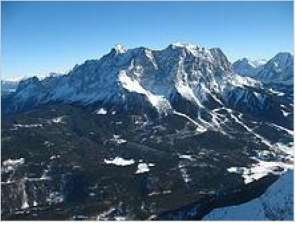

Zugspitze is the highest elevation in Germany
- northernmost point: List, Sylt, Schleswig Holstein 55°03′ N 8°24′E
- northernmost point in mainland Germany Aventoft, Schleswig-Holstein 54°54′N
- southernmost point: Haldenwanger Eck, Oberstdorf, Bavaria 47°16′12.39″N
â-westernmost point: Isenbruch, Selfkant, North Rhine-Westphalia 51°3′N 5°52′E
â-easternmost point: Deschka, Neißeaue, Saxony 51°16′N 15°2′E
- lowest point (man-made): Tagebau Hambach 293 m (961 ft) below sea level, Niederzier, North Rhine-Westphalia, 50°54′39″N 6°30′10″E
- lowest point (natural): Neuendorf Sachsenbande, Wilstermarsch, Schleswig Holstein 3.53 m (11.6 ft) below sea level 53°57′48″N 9°19′5″E highest point: Zugspitze (in the Bavarian Alps, 2,962 m (9,718 ft), Garmisch Partenkirchen / Grainau, Bavaria 47°25′ N 10°59′E
Import and export
German mechanical engineering products, chemicals and cars are highly valued across the world. Most of the imports for Germany come from the Netherlands, China
and France. These imports include machinery data processing equipment, chemicals, metals, electric equipment, pharmaceuticals, agricultural products and food.
Germany is well known for exporting motor vehicles and importing oil. Germany is the third largest exporter and importer in the world. Germany’s exports and imports account
for more than half of the European Union’s international trade. Germany has been a part of the World
Trade Organization since January 1, 1995. German exports tend to focus on industrial produced goods and services. German mechanical engineering products, chemicals and cars are highly valued across the world. Most of the imports for Germany come from the Netherlands, China and France. These imports include machinery data processing equipment, chemicals, metals, electric equipment, pharmaceuticals, agricultural products and food.
Poor country
Poverty in Germany refers to people living in relative poverty in  Germany.
During the last decades the number of people living in poverty has been increasing. Children are more likely to be poor than adults. There has been a strong increase in the number of poor children. In 1965 only one in 75 children lived on welfare, in 2007 one in 6 did.
Poverty rates differ by states. While in 2005 in states like Bavaria only 6.6% of children and 3.9% of all citizens were impoverished, in Berlin 15.2% of the inhabitants and 30.7% of the children received welfare payments.
The German Kinderhilfswerk, an organization caring for children in need, has demanded the government to do something about the poverty problem.
As of 2015, poverty in Germany is at its highest since  German reunification in 1990.Some

12.5 million  Germansare now classified as poor.

UNEMPLOYMENT
Poverty in Germany refers to people living in relative poverty in  Germany.
During the last decades the number of people living in poverty has been increasing. Children are more likely to be poor than adults. There has been a strong increase in the number of poor children. In 1965 only one in 75 children lived on welfare, in 2007 one in 6 did.
Poverty rates differ by states. While in 2005 in states like Bavaria only 6.6% of children and 3.9% of all citizens were impoverished, in Berlin 15.2% of the inhabitants and 30.7%
of the children received welfare payments.
The German Kinderhilfswerk, an organization caring for children in need, has demanded the government to do something about the poverty problem.
As of 2015, poverty in Germany is at its highest since  German reunification in 1990.

|
Some 12.5 million    Germans are now classified as poor.German |
seasonally |
|
adjusted harmonised jobless rate fell to 3.8 percent in January 2017 from 3.9 |
percent in |
the previous month and 4.4 percent a year earlier. It was the lowest level since November 1980, as the number of unemployed declined by 1.2 percent from December while the number of employed rose slightly by 0.2 percent. Also, youth unemployment rate fell to 6.5 percent, its lowest level since June 1992. Unemployment Rate in Germany averaged 5.63 percent from 1949 until 2017, reaching an all time high of 11.50 percent in April of 1950 and a record low of 0.40 percent in March of 1966.
Growth
The German economy expanded a seasonally-adjusted 0.4 percent in the fourth quarter of 2016, compared to a 0.1 percent growth in the September quarter, matching preliminary estimates. Growth was mainly supported by domestic demand while net trade contributed negatively as imports grew more than exports. Year-on-year, the GDP advanced 1.2 percent, slower than a preliminary estimate of 1.6 percent and compared with a 1.5 percent expansion in the third quarter. It was the weakest expansion since the third quarter 2014. Considering full 2016, the economy advanced 1.9 percent, the strongest in five years. GDP Growth Rate in Germany averaged 0.32 percent from 1991 until 2016, reaching an all time high of 2.10 percent in the second quarter of 2010 and a record low of -4.50 percent in the first quarter of 2009.Year-on-year, the GDP advanced 1.2 percent, slower than preliminary estimates of a 1.6 percent growth and a 1.5 percent expansion in the third quarter. It was the weakest expansion since the September quarter 2014. Household final consumption rose 1.5 percent, the same pace as in the previous quarter. Government consumption expanded 3.2 percent, down from a 3.5 percent expansion in the September quarter. Overall consumption contributed 1.5 percentage points to growth. Gross fixed capital formation grew 0.1 percent (after a 1.4 percent expansion in the preceding quarter). Investment in other products rose the most by 2.5 percent, followed by construction (1.3 percent). In contrast, machinery and equipment investment fell 2.6 percent. Overall investment gave no contribution to growth. Changes in inveentories also showed no contribution to growth. The balance of exports and imports substracted 0.2 percentage points to the year-on-year GDP growth.
Infrastructure
Around 82 million consumers help make Germany the largest food and beverage retail market in Europe. Total food retailing revenue grew by 2.3 percent, reaching EUR 191 billion in 2015. Other important distribution channels include food service sales (EUR 73.6 billion) and exports of pro-cessed foods (EUR 55.3 billion).
The German food service market is already the second most important distribution channel within the German food industry. An ever-growing share of consumers enjoy eating out-of-home in restaurants, cafes and snack bars. In 2015, food service sales grew by 3.5 percent and reached EUR 73.6 billion. All major market segments – including the non-commercial food service (4.5 percent increase) and quick service (3.7 percent increase) sectors – profited from the positive market environment.
Recent Investment Projects
Significant investments in the industry include, for example, the investment by the Turkish nut specialist Tadim, establishing a major presence in Emsdetten in the German state of North Rhine- Westphalia. In addition, California-based craft beer producer Stone Brewing Co. has become the first American craft beer maker operating a brewery in Europe. Stone invested over EUR 22 million in Berlin.
Ethnic methods of cooking
There is no one way to define German cooking. Each region in Germany has its own specialties and variations. The southern region of Germany share many specialties that reach over to Austria and Switzerland. In the southwest, cooking is greatly influenced by French cooking. Cooking in the eastern region has more of an Eastern European flavor. There are also foods that are shared by all regions, but prepared differently. Sauerkraut is a good example. Each region has its own technique and recipe for preparing and cooking this dish.
German cooking is often thought of as being very hearty with an emphasis on meat and potatoes.
This is explained partly by Germany’s relatively northern location. During the cold winter periods, Germans had to consume higher calorie and nutritious foods to sustain their health. Resulting dishes, for example, included hearty potato creations (Germany belongs to the top potato consuming countries), as well as Sauerkraut, which provides a good amount of Vitamin C.

Sauerbraten
Germans love their meat dishes, and sauerbraten (meaning ‘sour’ or pickled’ roast) is a pot roast that’s regarded as one of the country’s national dishes. It can be made
from many different meats, which are marinated in wine, vinegar, spices, herbs and seasoning for up to 10 days. This recipe is ideal for tenderising cheap meat cuts. Schweinenbraten is a delicious roast pork dish usually served with braised cabbage or sauerkraut and dumplings (knoedel), and washed down with a pilsner beer.
Make your own:
AÂ Â family recipefor a favourite dish.
 Rheinischer sauerbraten recipe (in German).
Cook in a crockpot.
Social influence and Culture
Germany’s diversity of lifestyle, preferences and ethno-culture has formed an open-minded and tolerant society. Despite social developments, the family continues to be a significant unit of identity and pride for Germans. Good education, a high standard of living and great freedom enable the country to deal positively with transitions and challenges. Germans respect perfectionism in all areas of business and private life. Order, privacy and punctuality come first for German people.
An important part of German culture is shaking hands. It is customary to shake someone’s hand when you meet them for the first time. It is rude to shake hands with one hand
in your pocket and don’t put them your pockets when conversing with someone.
Be on time
Punctuality is common practice in Germany. Being on time is an important part of social etiquette. For business meetings and social occasions punctuality is taken seriously. When you have an appointment with friends, you should arrive at the time you have arranged.
When you are invited to a private home for afternoon coffee or dinner, it is good to bring a small girt for the hosts. Flowers, a bottle of wine or candies are an appropriate gift.
Women
Significant changes were witnessed during and after World War II, when due to shortages of men, women came to hold positions of authority. They actively remained in the workforce. They aimed for higher education and became a significant part of the country’s workforce and at the same time kept house.
Titles and names
Germans appear reserved and unfriendly until you get to know them. It gives a good impression to use titles correctly. Besides Herr (Mr.) and Frau (Ms.) academic and other titles are quite important. A Doctor can be used either for a medical doctor or a holder of Ph.D. The old- fashioned Fraulein (Miss) is not used. It is more appropriate to use Frau, because it is more neutral and does not show the woman’s marital status.
The German language has a formal and informal form of address.
The formal Sie is always used together with the last name. Du (you) is used among younger people and friends, as well as for children. It is used together with the first name. If you are unsure which form to use, listen for which form of address the person you are conversing with uses and adopt the same form.
Recycling
Recycling is Germany’s contribution to the global battle to save the environment, and the country has been very successful in its fight against growing garbage heaps.
Trash is often separated in Germany, in private homes and sometimes in public bins as well. Separate disposal areas can be found for glass, paper and packaging. Private homes
may also have a separate container for organic waste, such as coffee grinds and food leftovers.
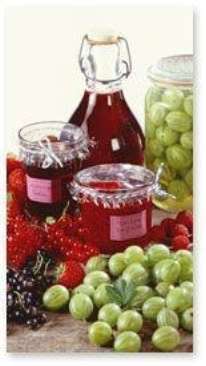
A Sweet Taste of Germany: Preserving Summer’s Bounty
While an efficient global transportation system allows us to eat any type of fruit year round, there’s something so very perfect about enjoying summer fruits freshly picked and at the peak of flavor.
Since summer fruits such as strawberries, raspberries, blueberries and blackberries perish so quickly, they are best enjoyed as soon as they are picked. No one knows that
better than the fruit-loving nation of Germany. Local farmers markets in Germany are
|
centuries-old |
traditions and a family outing |
to a “pick-your-own” fruit farm to gather fresh |
|
strawberries, |
raspberries, cherries, apples |
and many other types of fruits and |
|
vegetables is a favorite pastime. |
||
Recipe Collections – Cherry and Berry Recipes
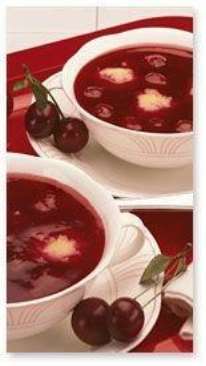
We’ve put together the perfect recipe collection to make the most out of the berry and cherry season. Ranging from sweet to refreshingly tart in flavor, cherries and berries in all their great varieties are not just delicious but also very nutritious since they are packed with vitamins and minerals. What to do with the fruits you haven’t managed to eat right away? These recipes will bring out the best this summer’s berries and cherries. Â Cherry Currant Sorbet
This light, healthy and utterly delicious homemade sorbet is the ultimate summer dessert.
|
Summer Fruit Dessert (Rote Grütze) |
||
|
The absolute German classic among the summer desserts! |
||
|
Juicy skewers with grilled turkey breast, squash and onions, drizzled with a flavorful |
||
|
blackberry sauce and served with grilled slices of baguette. Recipe courtesy of Armin |
||
|
Rossmeier, German celebrity TV chef. |
||
|
Delicate |
crêpes combine with flavorful forest berries, citrus and liqueurs to create |
|
|
this spectacular dessert. A feast for the eyes and the stomach!  Cherry Soup  with |
||
|
Surprise your family or guests with this wonderful cold fruit soup which can be served |
as |
|
|
appetizer |
or dessert. The scrumptious cream of wheat dumplings add substance to this |
|
|
great summer dish. |
||
|
If you’re looking for a soup that perfectly captures the spirit of Valentine’s Day, this is |
it. |
|
|
Cherries |
have long been reputed to be an aphrodisiac, and the seductive flavor and |
|
|
texture and vibrant color of this soup make it the ideal prelude to any romantic meal. |
||
Serve hot with vanilla sauce for a nice comforting touch.
Recipe courtesy of Uta Schepers, Special Projects Chef, Johnson and Wales University. Alcoholic Drinks and Cocktails:
Raspberry Beer Cooler Berried Treasure Cocktail Berry Goldwater Cocktail Marinated Fruit in Rum (Rumtopf)
Summer (Satureja hortensis) is the better known of the  savory species. It is an annual, but otherwise is similar in use and flavor to the perennial  w intersavory . It is used more often than winter savory, which has a slightly more bitter flavor.
This  herbhas lilac tubular flowers which bloom in the northern hemisphere from July to September. It grows to around 30 to 60 cm (0.98 to 1.97 ft) in height and has very slender, bronze-green leaves.
Summer savory is a traditional popular herb in  Atlantic Canada,where it is used in the same way  sageis elsewhere. It is the main flavoring in dressing for many fowl, mixed with ground pork and other basic ingredients to create a thick meat dressing known as c  retonnade (cretonade) which may be eaten with turkey, goose and duck. It also is used to make stews such as  fricot,and in meat pies. It is usually available year-round in local grocery stores in dried form and is used in varying proportions, sometimes added to recipes in large generous heaping spoonfuls (such as in cretonnade), and sometimes more
|
subtly |
(as in beans, for which savory |
has a natural affinity). Summer savory is a |
|
characteristic ingredient of  h erbes de |
 Provence. It is also widely used as a seasoning for |
|
|
grilled |
meats and barbecues, as well as in stews and sauces. |
|
Summer savory is preferred over winter savory for use in sausages because of its sweeter, more delicate aroma. It plays an important role in  Bulgarian cuisine,providing a strong flavor to a variety of dishes. Instead of salt and pepper, a Bulgarian table will have three condiments:  salt, paprika,and savory. When these are mixed it is called  s harena sol (шарена Ñол colorful salt’).

Summer savory is used in  Romanian cuisine,especially in  sarmale(stuffed  cabbageor  grape leaf rolls).
The plant is called Bohnenkraut in  German,bonenkruid in  Dutch,sarriette in  French, santoreggia in  Italian,ajedrea in Spanish, (throúbi) in  Greek,czÄ…ber ogrodowy in  Polish
(chubritsa) in  Bulgarian,cimbru in  Romanian,borsikafű in  H ungarianand  (Äubar) in

Summer savory is raised from seed grown in a rich, light soil. The seeds are very slow in germinating.
The early spring seedlings are often topped for fresh use in June. When the plants are in flower, they may be pulled up and dried for winter use.